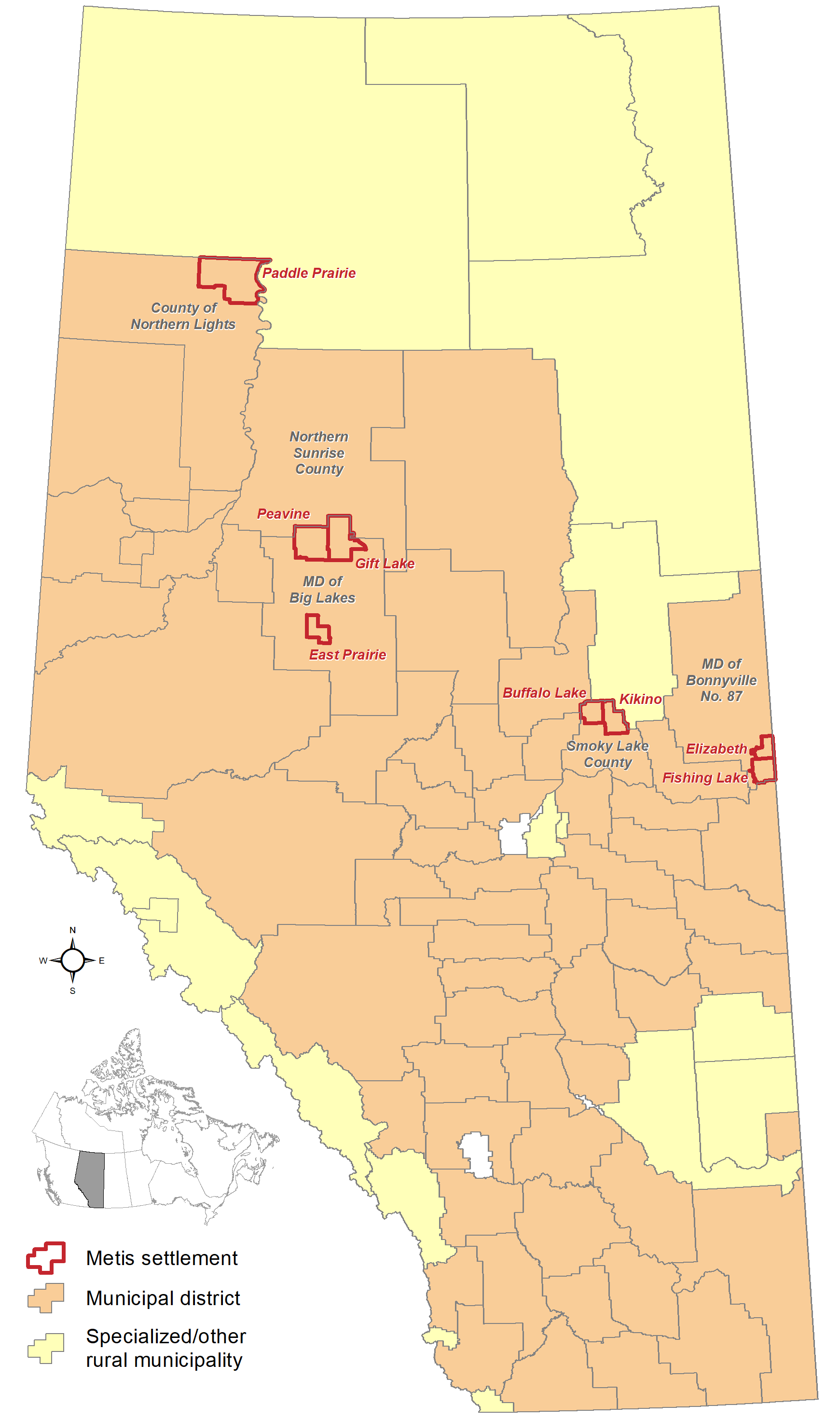Section 35 of the Constitution Act (1982)
In 1982, after generations of fighting for justice, the existing Aboriginal and Treaty rights of Canada’s Indigenous peoples received constitutional protection.
Section 35 of the Constitution Act, 1982 provides:
- The existing aboriginal and treaty rights of the aboriginal peoples of Canada are hereby recognized and affirmed.
- In this Act, “aboriginal peoples of Canada” includes the Indian, Inuit and Métis peoples of Canada.
This constitutional protection was a victory for all Aboriginal peoples in Canada. For the Métis Nation, the explicit inclusion of the Métis in s. 35 was viewed as a new beginning after over 100 years of denial, avoidance and neglect by governments in Canada. Even within the Parliament of Canada, section 35 was described as a “political watershed” and a “turning point for the status of native peoples” in Canada.
Métis Settlements
Alberta is the only province to recognize Métis title to the land.
"Métis Settlements located across the northern part of Alberta are comprised of the Paddle Prairie, Peavine, Gift Lake, East Prairie, Buffalo Lake, Kikino, Elizabeth and Fishing Lake settlements. These eight settlements form a constitutionally protected Métis land base in Canada. They comprise 505 102 ha, much of it covered by forest, pasture and farmland. [...]
In 1985 the Alberta government passed what was known as Motion 18, a resolution committing the province to transfer title of the settlements to the Métis people and to provide constitutional protection of the lands by means of an amendment to the Alberta Act.
This paved the way for the historic 1989 Alberta Settlements Accord, which passed into legislation with the 1990 Métis Settlement Act. Replacing the previous Métis Betterment Acts, the Métis Settlements Act provides for the legal transfer of land title to the Métis people, local municipal and traditional style self-government, and establishes eight settlement corporations and the Métis Settlements General Council as legal entities." (From The Canadian Encyclopedia).
Image: Maps of Métis Settlements in Alberta created by Hwy43 (Creative Commons License).
R. v. Powley (2003)
R. v. Powley was the first major Aboriginal rights case concerning Métis peoples. The Powley decision resulted in the "Powley Test,” which laid out a set of criteria that not only defines what constitutes a Métis right, but also who is entitled to those rights.
Read more at Indigenous Foundations.
Scrip
"Scrip was used to transfer land to Métis peoples in Canada from 1885 until the 1920s. Land scrip allotted either 160 or 240 acres to a Métis individual. Authorities could allot the land anywhere in the province in which the scrip was issued, which caused many Métis individuals to relocate away from ancestral territories. Because of this, some chose not receive their land at all."
Read more at Indigenous Foundations.
Featured Resources at X̱wi7x̱wa Library
-
-
Contemporary Metis Justice byCall Number: MC B45 C66 1999ISBN: 0888803923Publication Date: 1999-01-01
-
